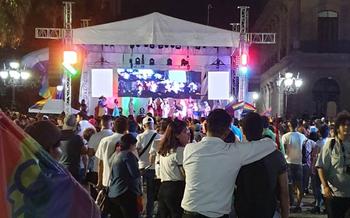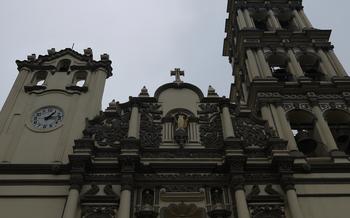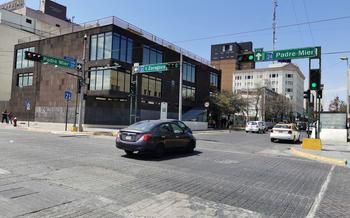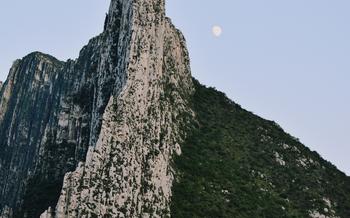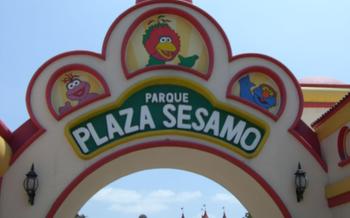
Cañón de la Huasteca
- The Cañón de la Huasteca, a Natural Wonder
- Hiking Trails for All Levels
- Swimming in Natural Pools
- Wildlife Spotting and Birdwatching
- Accommodation Options Near the Cañón de la Huasteca
- Food and Dining Options
- Shopping for Souvenirs and Handicrafts
- Safety Tips for Visitors
- Photography Tips for Capturing the Beauty of the Canyon
- Sustainable Tourism Practices
- Insider Tip: Hidden Gems in the Cañón de la Huasteca
The Cañón de la Huasteca, a Natural Wonder
The Cañón de la Huasteca is a breathtaking natural wonder located just a short drive from Monterrey, Mexico. This stunning canyon is home to a unique ecosystem, with a diverse array of flora and fauna that thrives in its rugged terrain. The canyon holds deep spiritual significance for the indigenous communities who have inhabited the area for centuries, and it served as an important passageway for ancient civilizations, leaving behind a rich historical and cultural legacy.
The canyon's unique ecosystem is a product of its diverse topography, which includes towering cliffs, lush vegetation, and crystal-clear rivers. This varied landscape provides a habitat for a wide range of species, including birds, reptiles, and mammals, making it a paradise for nature enthusiasts and wildlife photographers. The canyon's spiritual significance stems from its connection to the natural world and its role in the traditional beliefs of the indigenous communities. Visitors to the canyon can experience this spiritual connection by participating in guided tours that highlight the cultural and historical importance of the site.
Hiking Trails for All Levels
The Cañón de la Huasteca offers a diverse range of hiking trails to suit hikers of all levels, from leisurely strolls to challenging treks. The Sendero a la Cascada is a popular option for beginners, leading to a stunning waterfall with natural pools for swimming. The Mirador de la Sierra trail provides breathtaking panoramic views of the canyon and surrounding mountains. For a more strenuous hike, the Cañón del Diablo trail offers a thrilling adventure with steep climbs and rugged terrain.
Each trail has its own unique features and challenges. The Sendero a la Cascada is approximately 2 kilometers long and takes about an hour to complete, making it ideal for families with young children. The Mirador de la Sierra trail is slightly longer, at 3 kilometers, and takes about two hours to complete, with moderate elevation gain. The Cañón del Diablo trail is the most challenging, at 5 kilometers with significant elevation changes and technical sections.
Before embarking on any hike, it's important to choose the right trail based on your fitness level, time constraints, and interests. Proper footwear and hydration are essential for a safe and enjoyable hiking experience. The trails in the Cañón de la Huasteca are well-maintained, but it's always advisable to bring a map or GPS device to avoid getting lost.
Whether you're a seasoned hiker or a beginner looking for a new adventure, the Cañón de la Huasteca has something to offer everyone. Embrace the challenge, explore the hidden corners of the canyon, and create memories that will last a lifetime.
Swimming in Natural Pools
The Cañón de la Huasteca is home to several natural pools, inviting visitors to take a refreshing dip in the crystal-clear waters. These pools are formed by natural springs and waterfalls, creating a tranquil oasis amidst the rugged canyon landscape.
To reach the natural pools, visitors can follow designated trails that lead down to the water's edge. The pools vary in size and depth, offering options for both adults and children. The water is typically cool and refreshing, providing a welcome respite from the warm canyon air.
Swimming in the natural pools is a delightful experience, allowing visitors to immerse themselves in the beauty of the canyon. The water is clean and clear, revealing a vibrant underwater world of rocks, plants, and fish. Visitors can swim, float, or simply relax on the edge of the pools, taking in the stunning scenery.
Safety is paramount when swimming in natural pools. Visitors should be aware of the potential for strong currents and slippery rocks. It is advisable to wear water shoes or sandals to protect your feet and avoid accidents. Additionally, it is essential to be mindful of the depth of the water and swim within your limits.
For those seeking a truly unforgettable experience, swimming in the natural pools of the Cañón de la Huasteca is a must-do activity. The chance to swim in pristine waters, surrounded by breathtaking canyon views, is an experience that will stay with you long after your visit.
Wildlife Spotting and Birdwatching
The Cañón de la Huasteca is home to a diverse array of wildlife, including birds, reptiles, and mammals. Birdwatching enthusiasts will be delighted by the opportunity to spot a variety of native species, such as the colorful Montezuma quail, the majestic golden eagle, and the elusive green-breasted mango hummingbird. With its diverse habitats, the canyon provides a haven for a variety of reptiles, including the spiny-tailed iguana, the Texas horned lizard, and the black-tailed rattlesnake. Nature lovers may also encounter mammals such as the white-tailed deer, the gray fox, and the playful ring-tailed cat.
To enhance your wildlife spotting experience, consider using binoculars or a spotting scope to get a closer look at these fascinating creatures. Maintaining a quiet presence and moving slowly will increase your chances of spotting wildlife. Birdwatching is best during the early morning or late afternoon when birds are most active. Remember to respect wildlife and their habitats by observing them from a distance and avoiding disturbing their natural behaviors.
Accommodation Options Near the Cañón de la Huasteca
When planning your adventure in the Cañón de la Huasteca, choosing the right accommodation is crucial. A range of options is available near the canyon, catering to diverse budgets and preferences.
Budget travelers can opt for hostels or guesthouses, which offer basic amenities and a chance to socialize with fellow adventurers. Mid-range hotels provide more comfort and convenience, often with private rooms and en-suite bathrooms. For a luxurious experience, several high-end resorts offer stunning views, upscale amenities, and personalized service.
Each type of accommodation has its pros and cons. Hostels are the most affordable but may lack privacy and comfort. Mid-range hotels offer a good balance of value and amenities. Luxury resorts provide the ultimate in comfort and exclusivity but come with a higher price tag.
When choosing accommodation, consider factors such as your budget, group size, and desired level of comfort. Read online reviews and compare prices to find the best deals. For a truly unique experience, consider staying in a traditional Mexican hacienda or a charming bed and breakfast.
Here are some specific recommendations based on traveler reviews:
- Budget: Albergue La Posada del Cañón offers basic but clean and comfortable dorm rooms and private rooms.
- Mid-range: Hotel Boutique La Casa de la Abuela is a charming hotel with a colonial-style courtyard and spacious rooms.
- Luxury: Hacienda Puerta del Cielo is a luxurious resort with stunning views of the canyon, private villas, and a range of amenities.
No matter your choice of accommodation, the Cañón de la Huasteca offers an unforgettable experience surrounded by natural beauty and adventure.
Food and Dining Options
The culinary delights of the region are a must-try for any visitor to the Cañón de la Huasteca. From traditional Mexican dishes to local specialties, there's something to satisfy every palate.
For a truly authentic experience, head to one of the many local restaurants or eateries near the canyon. These establishments often offer a variety of regional dishes, such as cabrito al pastor (roasted goat), enchiladas potosinas (corn tortillas stuffed with cheese and topped with a spicy sauce), and chilaquiles (fried corn tortillas in a spicy sauce).
If you're looking for something a bit more upscale, there are also several fine dining restaurants in the area that offer a modern take on Mexican cuisine. These restaurants often feature innovative dishes made with fresh, local ingredients.
No matter what your budget or preferences, you're sure to find something to your taste in the Cañón de la Huasteca.
Here are a few tips for finding the best food in the region:
- Ask your hotel or tour guide for recommendations.
- Look for restaurants that are popular with locals.
- Be adventurous and try something new.
- Don't forget to sample the local fruits and vegetables.
- Support local businesses by eating at restaurants that use locally sourced ingredients.
Shopping for Souvenirs and Handicrafts
The Cañón de la Huasteca region is a treasure trove of unique handicrafts and souvenirs that reflect the rich cultural heritage of the area. From intricate pottery and textiles to handcrafted jewelry and wood carvings, there's something for every taste and budget.
Local Markets:
Stroll through the vibrant local markets to discover an array of handmade goods. These markets are a hub of activity, where you can interact with local artisans, haggle for the best prices, and find one-of-a-kind souvenirs.
Artisan Workshops:
Visit artisan workshops to witness the skilled hands of local craftspeople as they create their masterpieces. You can learn about traditional techniques, observe the creative process, and purchase unique items directly from the artists.
Bartering and Prices:
Don't be afraid to bargain with the vendors, as it's a common practice in local markets. However, always be respectful and offer a fair price. Remember, your purchases directly support the livelihoods of these talented artisans.
Supporting Local Artisans:
By shopping for souvenirs and handicrafts, you not only take home a piece of the region's culture but also contribute to the preservation of traditional crafts. Your support helps sustain the livelihoods of local artisans and ensures that these traditions continue to thrive for generations to come.
Safety Tips for Visitors
Exploring the Cañón de la Huasteca is generally safe, but certain precautions should be taken to ensure a hassle-free experience. As with any outdoor adventure, being aware of your surroundings and taking necessary safety measures is paramount. Here are some tips for staying safe in the canyon:
-
Be cautious of slippery surfaces: The rocks and trails in the canyon can be slippery, especially after rain. Wear appropriate footwear with good traction to avoid falls.
-
Stay hydrated: The canyon can get hot and humid, especially during the summer months. Bring plenty of water and drink regularly to stay hydrated.
-
Be aware of wildlife: While most wildlife in the canyon is harmless, it's important to be aware of your surroundings and avoid disturbing animals. Do not approach or feed wild animals, and be cautious of snakes and insects.
-
Avoid swimming in strong currents: If you choose to swim in the natural pools, be aware of the water currents. Avoid swimming in areas with strong currents or near waterfalls.
-
Respect local customs: When visiting indigenous communities near the canyon, be respectful of their customs and traditions. Ask permission before taking photos or entering private property.
-
Be prepared for emergencies: Pack a first-aid kit and other essential items in case of emergencies. Inform someone about your itinerary and expected return time.
Photography Tips for Capturing the Beauty of the Canyon
The Cañón de la Huasteca offers a photographer's paradise with its stunning waterfalls, towering rock formations, and abundant wildlife. To capture the beauty of the canyon in your photos, consider the following tips:
Camera Settings: Use a wide-angle lens to capture the vastness of the canyon and a telephoto lens for close-up shots of wildlife and details. Set your camera to a low ISO to minimize noise and use a tripod for stability, especially for long exposure shots.
Lighting Conditions: The best time to photograph the canyon is during the golden hours of sunrise and sunset when the light is warm and diffused. Avoid harsh midday sun, which can create harsh shadows and washed-out colors.
Composition: Look for interesting compositions that include leading lines, such as a winding river or a cascading waterfall. Use the natural elements of the canyon, such as rocks, trees, and clouds, to frame your shots.
Waterfalls: To capture the dynamic beauty of waterfalls, use a slow shutter speed to create a sense of movement. Experiment with different shutter speeds to achieve the desired effect.
Wildlife: Be patient and observe the wildlife before taking a shot. Use a telephoto lens to capture close-up shots without disturbing the animals.
Respect the Environment: Always prioritize the preservation of the canyon's natural beauty. Stay on designated trails, avoid using flash photography near wildlife, and pack out all your trash.
Sustainable Tourism Practices
As responsible travelers, it's important to minimize our environmental impact and support the local communities when visiting the Cañón de la Huasteca. Here are some tips for practicing sustainable tourism:
- Reduce waste: Bring reusable water bottles, containers, and shopping bags to avoid creating unnecessary trash. Properly dispose of waste in designated bins or recycling containers.
- Conserve water: Water is a precious resource in the canyon region. Be mindful of your water usage, especially when showering or brushing your teeth.
- Support local businesses: Choose locally-owned restaurants, shops, and tour operators. This helps to support the local economy and preserve traditional practices.
- Respect the environment: Stay on designated trails, avoid disturbing wildlife, and refrain from picking plants or flowers. Leave the canyon as you found it, or even better.
- Educate yourself: Learn about the local culture and customs before your visit. This will help you to be more respectful and avoid any misunderstandings.
By following these tips, you can help to protect the environment and support the local communities, ensuring that the Cañón de la Huasteca remains a beautiful and sustainable destination for generations to come.
Insider Tip: Hidden Gems in the Cañón de la Huasteca
Beyond the popular attractions, the Cañón de la Huasteca holds secret spots and lesser-known gems that offer unique experiences and breathtaking views. To discover these hidden treasures, venture off the beaten path and seek advice from locals or experienced tour guides.
One such hidden gem is the secluded Cascada de San Lorenzo, a mesmerizing waterfall tucked away in a remote corner of the canyon. The journey to this hidden oasis requires a bit of hiking and scrambling, but the reward is a breathtaking sight of the cascading waters surrounded by lush vegetation.
Another hidden gem is the Cueva de la Huasteca, a mysterious cave system that offers a glimpse into the canyon's geological wonders. With its intricate tunnels, sparkling crystals, and resident bats, the cave provides an adventurous and educational experience for visitors.
For those seeking solitude and tranquility, the secluded swimming holes and natural pools offer a serene escape. Find a hidden oasis where you can immerse yourself in the crystal-clear waters, surrounded by towering canyon walls and the sounds of nature.
Remember, when exploring these hidden gems, respect the environment and minimize your impact. Leave no trace, avoid disturbing wildlife, and follow local guidelines to ensure the preservation of these special places for future generations.

